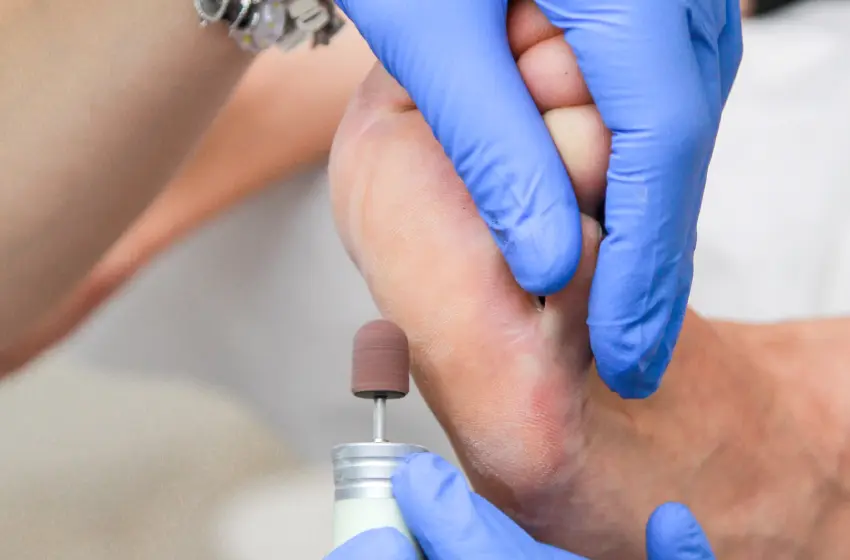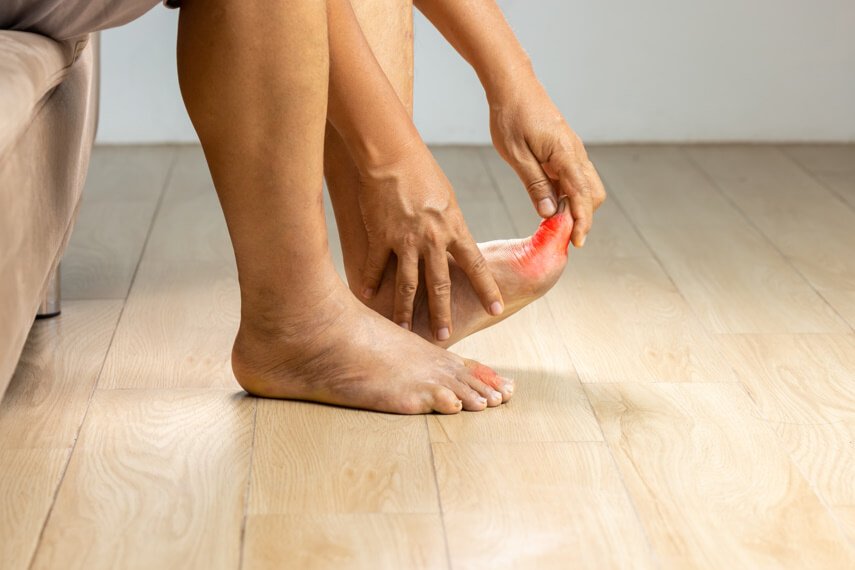Gastrosoleus Tightening in Diabetic Feet: Causes, Symptoms, and Treatment Solutions
Foot problems in diabetic patients are more than just ulcers and infections. One often-overlooked cause of mobility issues and ulcer risk is gastrosoleus tightening, which can silently contribute to abnormal gait, pressure points, and skin breakdown. Recognising and treating this condition early can help prevent serious complications, including foot deformities and ulcers.
In this blog, we explore what gastrosoleus tightening is, why it occurs more frequently in diabetic patients, how to recognise it, and both non-surgical and surgical treatments, including gastrosoleus tightening surgery.
What is Gastrosoleus Tightening?
The gastrosoleus complex consists of two muscles in your calf:
- Gastrocnemius: The outer calf muscle, active in walking and running.
- Soleus: Lies beneath the gastrocnemius, also critical for standing and balance.
These muscles join to form the Achilles tendon, which inserts into the heel bone. When the gastrosoleus complex becomes tight or contracted, it restricts ankle dorsiflexion (the ability to flex the foot upward), leading to walking abnormalities, increased forefoot pressure, and eventually foot ulcers, especially in diabetic neuropathy cases.
Causes of Gastrosoleus Tightening in Diabetic Patients
Peripheral Neuropathy
In diabetic neuropathy, nerve damage affects muscle balance and reflexes. Lack of movement or altered gait can lead to calf muscle shortening over time.
Hyperglycemia-Associated Connective Tissue Changes
Chronically elevated blood sugar causes glycation of connective tissues (including tendons), reducing their elasticity and contributing to gastrocnemius muscle stiffness.
Sedentary Lifestyle
Many diabetic patients reduce physical activity due to fatigue or pain. Immobility accelerates muscle shortening and leads to a loss of ankle flexibility.
Charcot Foot and Other Deformities
Structural foot changes caused by long-term diabetes can shift pressure and lead to compensatory tightening of the calf muscles.
Symptoms and Clinical Signs
gastrosoleus tightening often presents gradually and may include:
- Difficulty flexing the foot upward (limited ankle dorsiflexion)
- Heel lift-off during walking or standing
- Increased pressure under the forefoot and toes
- ng>Gastrocnemius pain or cramping, especially after activity
- Formation of corns, calluses, or foot ulcers
- Altered gait or balance issues
Why is Gastrosoleus Tightening a Problem in Diabetic Feet?
In people without diabetes, a tight gastrocnemius might just cause calf pain or minor gait issues. But in diabetic patients, the consequences can be serious:
- Increased forefoot pressure leads to callus formation and ulcers, especially in those with loss of protective sensation.
- Limited ankle mobility compromises shock absorption and balance.
- Poor pressure distribution increases the risk of foot deformities, toe contractures, and Charcot foot.
- The inability to properly offload the heel complicates wound healing after ulcer or surgery.
Early recognition and intervention are key to preventing irreversible damage.
Treatment Solutions
Gastrocnemius Stretching Exercises
Regular calf stretching can maintain and improve flexibility. Exercises like wall stretches or towel stretches are simple but effective. They help restore range of motion and improve walking biomechanics.
Footwear Modifications
- Rocker-bottom soles to reduce forefoot pressure
- Heel lifts and ankle braces to accommodate tightness
- Custom insoles or orthotics to redistribute pressure
Physical Therapy
Guided physical therapy can help improve muscle balance, enhance gait, and prevent progression of contractures.
Blood Sugar Control
Good glycemic control reduces further tissue glycation and improves healing capacity.
Surgical Options
When conservative treatments fail or if the tightening leads to repeated ulcers, gastrosoleus tightening surgery may be indicated. Options include:
Gastrocnemius Recession (Strayer Procedure)
A minimally invasive technique that lengthens the gastrocnemius muscle. It helps restore ankle dorsiflexion without significantly weakening the calf.
Achilles Tendon Lengthening
Used in more severe cases where the soleus and Achilles are also tight. May be done via open or percutaneous techniques.
Tendon Transfers or Foot Reconstruction
Sometimes combined with other procedures for patients with multiple foot deformities or Charcot arthropathy.
Gastrosoleus Tightening Clinics in Surat often offer a comprehensive approach, combining diagnostics, physiotherapy, and surgical correction tailored to diabetic foot care.
Conclusion
gastrosoleus tightening is a hidden but significant contributor to diabetic foot complications. Recognising early symptoms like tight calves, altered gait, and reduced ankle movement can help initiate timely treatment. Conservative care, including gastrocnemius stretching, can often reverse mild cases. However, when deformity or ulceration develops, gastrosoleus tightening surgery becomes a vital part of foot preservation.
If you're dealing with persistent calf tightness, foot ulcers, or walking issues and have diabetes, consult a foot and ankle specialist or diabetic foot clinic in Surat to explore a personalised treatment plan.
FAQs
What is gastrocnemius tightness?
Gastrocnemius tightness refers to the shortening or reduced flexibility of the gastrocnemius muscle, one of the major calf muscles. This muscle crosses both the knee and ankle joints, and when tight, it restricts ankle dorsiflexion - the ability to lift the foot upward, especially when the knee is straight. It often leads to calf pain, limited range of motion, altered walking patterns, and in diabetics, it increases the risk of foot ulcers due to pressure imbalance.
How do you treat tightness in the gastrocnemius?
Treatment options include:
- Stretching exercises: Wall stretch, lunge stretch, or towel-assisted stretches are performed regularly.
- Physical therapy: Guided rehab to improve flexibility, posture, and walking mechanics.
- Footwear changes: Shoes with proper heel support or rocker soles to reduce calf strain.
- Massage or foam rolling: Helps reduce muscle tension and improve blood flow.
- Gastrocnemius recession surgery: In chronic or severe cases, surgery may be done to lengthen the muscle and restore mobility.
- Physical therapy: Guided rehab to improve flexibility, posture, and walking mechanics.
Why does my soleus get tight?
The soleus muscle, located beneath the gastrocnemius, can become tight due to:
- Overuse or repetitive strain from walking, running, or prolonged standing
- Poor posture or biomechanics
- Inadequate stretching or warm-u
- Flat feet or improper footwear
- Diabetes, which affects soft tissue elasticity and muscle function
- Poor posture or biomechanics
Tightness in the soleus limits ankle flexibility when the knee is bent, contributing to stiffness, balance issues, and even Achilles tendon pain.
How do you release a tight soleus?
To relieve soleus tightness:
- Bent-knee calf stretches: Target the soleus more directly than straight-leg stretches. Try seated or standing soleus stretches against a wall.
- Foam rolling or massage: Apply pressure to the lower calf muscle to release tension.
- Heat therapy: Warm packs before stretching help loosen the muscle.
- Strengthening and balance training: Improves muscle coordination and prevents recurring tightness.
- Consult a specialist: if symptoms persist or interfere with daily activities, especially in diabetic patients.
- Foam rolling or massage: Apply pressure to the lower calf muscle to release tension.



.jpg)

